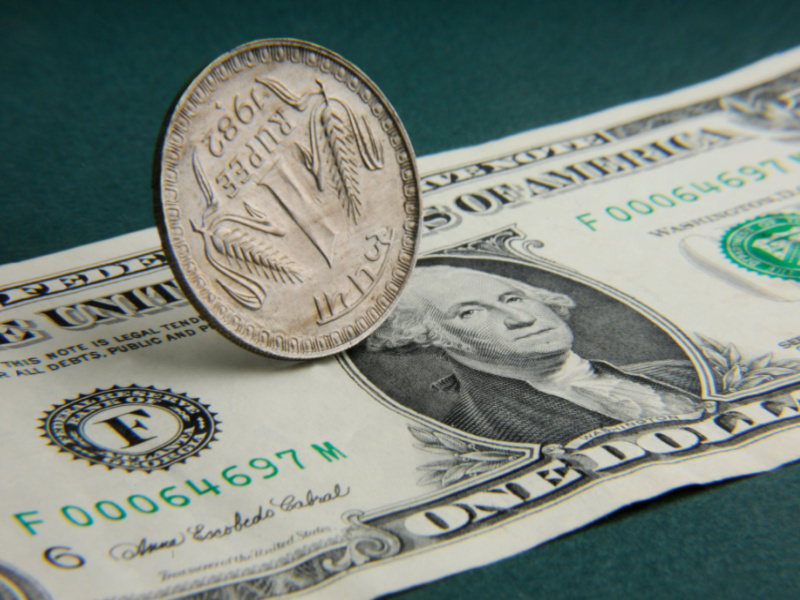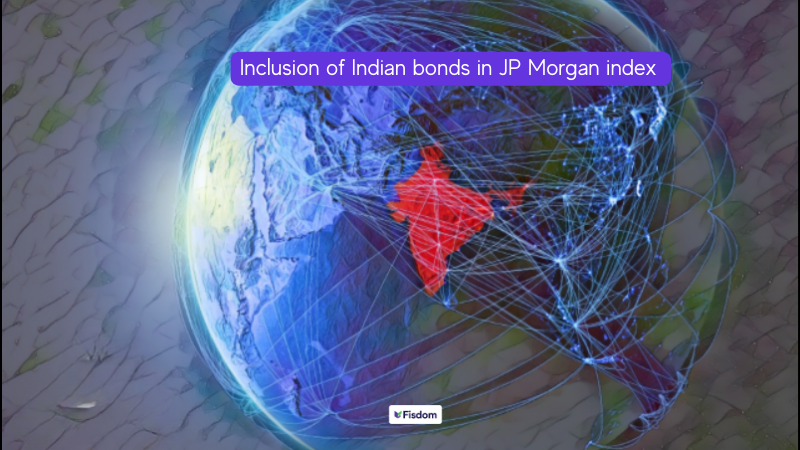
Every day we hear news of movements in the rupee-dollar exchange rate and the rupee’s value vis-à-vis the US dollar. Currency values keep fluctuating and so does the value of the rupee. Currency fluctuations are driven by and dealt with in the foreign exchange markets.
As of April 2023, the Rupee-Dollar exchange rate is $1= Rs. 82
This means every 1 U.S Dollar will fetch 82 Indian Rupees.
So, how is this exchange rate determined and what are the factors that affect this exchange rate? Here is all you need to know.
Basics of currency exchange
The U.S dollar is one of the standard currencies accepted globally for the trading of commodities. Currency exchange rates also impact foreign exchange trading or forex trading. The global forex market is very large and highly liquid, with large-scale transactions taking place on a daily basis.
Currency exchange rates always involve two currencies at a time, one being exchanged for the other. For instance, the Rupee-Dollar exchange rate is represented as USD/INR.
List of factors impacting Rupee-Dollar exchange rate
Here are some of the key factors that determine the exchange rate between rupees and dollars:
- Inflation
Inflation is an economic scenario where prices of generally used goods and services rise over an extended period of time. As prices rise, the purchasing power of currency declines. Therefore, inflation tends to be inversely related to any currency’s strength. The higher the inflation, the weaker will be the country’s currency.
Currently, as we are witnessing a period of rising inflation in India, the purchasing power of rupee is going down. Thus, we can see the rupee weakening against the dollar.
- Interest rates
Interest rates and inflation are also interlinked. Whenever there are rising inflation scenarios, central banks rush to increase interest rates to bring down inflation. Higher interest rates tend to attract more foreign investments to the country and this boosts the country’s currency. However, if inflationary conditions continue for an elongated period, higher interest rates cannot save the currency. This could further lead to currency devaluation.
Interesting fact
As per IMF projections, India is one of the fastest-growing economies in the world. Therefore, even if the Rupee weakens further against the Dollar to touch an exchange rate of Rs. 90 for 1 USD, the economy is expected to remain strong as exports will benefit although imports may get costlier.
- Impact of political instability on economy
Oftentimes, countries across the globe may experience political instability. This results in poor economic performance, which then keeps investors away from the country’s economy. Therefore, the more stable a country’s economy, the more attractive it will be to foreign investors. Depending on whether foreign investors enter or exit the economy for longer periods, the country will see either a rise or decline in the inflow of funds and therefore a corresponding impact on its currency exchange rate.
- Public debt
Public debt refers to a country’s government borrowings to deploy funds in various infrastructure and other development projects. The higher a country’s public debt, the higher the chances of the economy entering into inflation in the long run.
Take, for example, the situation that we are seeing in Sri Lanka. The country continued to have large public debts, and this kept foreign investors at bay. As the country could not attract more foreign investors, it started entering into a further debt trap, resulting in its complete inability to repay and resulting impact on its exchange rate. Now, as the country’s inflation is out of control, it continues to pose a threat to foreign investors since its exchange rate has weakened.
- Current account deficit
A country’s current account deficit means that the country is spending more than it is earning through foreign trade. In most cases, a current account deficit sees higher borrowings from foreign entities to cover the deficit. As the country continues to demand more foreign currency, the local currency’s exchange rate begins to deteriorate.
- Speculation
Since currencies are also traded, the currency markets are constantly on the lookout for any weakening signs in a currency. If a country’s currency increases in demand, it is going to have more value in the near future. Thus, investors and traders constantly speculate whether there will be an increase or decrease in the value of a currency and accordingly either demand more of it or less of it. This impacts the currency’s exchange rate.
Conclusion
For any country to ensure a sustainable rate of its currency, it must increase its demand. It is the demand for a particular currency that will influence its value in the long run. The demand is further influenced by multiple factors, some of which we saw above. Since the US economy is believed to be relatively stronger than the Indian economy, the Dollar continues to remain in higher demand as compared to the Rupee. Therefore, in the near term, we can expect the rupee value to drop until some of the above-mentioned factors are sustainably brought back under control.
FAQs
You can check for daily rupee-dollar exchange rate movements online. There are various websites offering details of currency exchange rate movements.
Rupee depreciation means the fall in the value of Rupee against the Dollar. This means, Rupee has a lesser value as compared to the Dollar and it will take more rupees to fetch 1 Dollar.
Yes, Rupee exchange rate and its appreciation/depreciation impact the stock markets. The level of impact may depend on how long-drawn the appreciation or depreciation will continue.
When the Rupee depreciates, the domestic companies experience a rise in their import costs. This results in a consecutive impact on the company’s stock prices due to slower performance. However, companies that export can benefit in such scenarios and experience bullish trends.



























